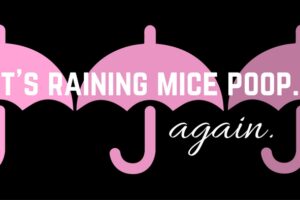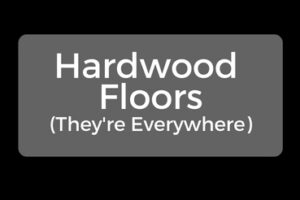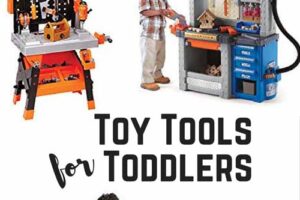HELOCs or home equity lines of credit, who doesn’t love them!?!
Tap into the equity on my home to fund our real estate investing journey… hell yes!!
Only pay on the money I use? Yes please!
As you may know, we bought a cute little 2 unit fixer upper from hudhomestore.gov just about 4 years ago (2016) and we’ve already gone through three HELOC processes and one refinance with this ONE property!
After I shared the odd fact that we’ve taken out those 3 HELOCs in 3 Years to help us fund the rehab and to help purchase other real estate I got BOMBARED with questions from you guys over on Instagram!
Overview
So I figured I’d create one blog post encompassing alllll the answers 🙌…. One very long blog post I should add.
1️⃣ First I’ll do a brief rundown of the timeline…
2️⃣ …Then I’ll talk about why we took out 3 HELOCs in 3 years and how each loan directly benefited our investing.
3️⃣ …I’ll also share how we were able to buy a duplex in cash thanks to these 3 HELOCs
4️⃣ Lastly, I’ll share how we made the decision to secure 65% of the properties’ equity as long term debt and 15% as a HELOC.
Whew… that’s a lot to cover…
Do you have your cup of coffee or tea? are you ready???
Quick Overview of the Timeline:
- 07/2016: Bought a foreclosed 2 unit for cash. Fixed it up with credit cards & savings.
- 03/2018: Got a $100,000 HELOC, paid off renovations with it.
- 02/2019: Got a $195,500 HELOC, paid off 2nd round of renovations and purchased a duplex.
- 02/2020: Refinanced into a 30 year fixed rate mortgage of $175,000
- 07/2020: Got a $40,000 HELOC.

Long Story of the Timeline
07/01/2016: Cash Purchase
We purchased Main Street House, a 2 unit HUD foreclosed property for cash in July of 2016 for about $111,000 including closing costs. It was a 3 bedroom/1 bathroom house with a 1 bedroom/1 bathroom apartment above the garage and both units needed a tooooon of work.
We started with renovations on the apartment so we could start bringing in monthly income as soon as possible. We were grateful to be living with family and weren’t desperate to get into our house, especially since the renovation took us until January of 2017 (a full 7 month of rehab!!!) We put renovation materials onto 20 month interest free credit cards and paid the few subcontractors we used (only electric and plumbing) with savings/cash.
([Please note also:] Since my husband and I own our own remodeling business, we did most of the labor ourselves on this apartment remodel. )
03/23/2018: $100,000 HELOC
Fast forward 20 months and we got $100,000 HELOC with a credit union, paid off renovations from the apartment and used some of the HELOC money to continue renovating our own home.
We were in the process of adding a 4th bedroom and 2nd full bathroom to the home, were running low on cash and with a rate of 2.84% we couldn’t pass up the opportunity to apply for a HELOC. It’s funny to look back at the process now because back then I had no idea what I was doing! I just googled HELOC and called the first lender that popped up… and even worse, went with the first lender I called!!
I didn’t know the difference between a HELOC and a cash out refi, I didn’t know what questions to ask the lender, I didn’t know what I didn’t know!! So I am so grateful it worked out… (well for the most part it did) and want to share all of the successes and failures with you guys!
I say “I’m grateful it worked out” because of many reasons, the main one being I didn’t realize the interest rate we were originally quoted (2.84%) was only an introductory interest rate for the first year and then variable after that! The variable rate would become prime + 1% at the end of the first year.
But luckily we didn’t make it the full 12 months with that HELOC because a deal we couldn’t pass up fell into our laps!
02/07/2019: $195,500 HELOC
In February of 2019 we took out a $195,500 HELOC with the same credit union after we found a deal on a duplex we wanted to purchase. The good thing about working with the same lender again was that they already knew us, they knew we paid on time every month, they knew our overall real estate strategy and they already had a lot of our paperwork for underwriting! So the second HELOC process went a lot faster and we were able to jump on the duplex deal because our original HELOC company got the second HELOC done in under 3 weeks!
As a renovated 3 bed/1 bath house and 1 bed apartment, Main Street House appraised for $235,000. As an owner occupant we could take up to 80% LTV (if you’re trying to get a HELOC on an investment property it’s usually somewhere between 65%-75% LTV).
This second HELOC not only paid off the original HELOC (of which we used $58k mainly for renovations to the house and apartment) but we were then also able to buy the duplex deal in cash!
Another important thing I should note here is the lender was able to account for our rental income for the new HELOC because we had a tenant in the apartment for 2 years at that point! In order for most lender’s to be able to use rental income as part of your DTI (debt to income) you have to be a landlord for at least two years.
02/2020: $175,000 30 year Mortgage
In February of 2020 the second HELOC interest rate went up to 6.8% which in the grand scheme of things it’s terrible. However, by this time we had officially and legally added a 4th bedroom and 2nd full bathroom to the house and knew our property value had increased dramatically again.
We also wanted to get into a 30 year fixed rate mortgage since we owed $192,000 on the newest HELOC, which to me is a lot of money, especially on a HELOC with a variable rate – so it could change at any time! My thoughts were, what if rates go absolutely nuts and the interest rate sky rockets? That could completely kill our cash flow!!
We also had no plans on paying the HELOC back any time soon so we thought it made sense to lock in a low interest rate on long term debt, especially because rates were decreasing at the time we starting looking into refinancing.
As a 4 bedroom 2 bathroom home Main Street House appraised for $268,000 in February of 2020, so we refinanced for $175,000 to pay off the old HELOC at a fixed 3.85% interest rate on a 30 year mortgage!
07/08/2020 $40,000 HELOC
In July we decided to take the last step of our long and drawn out brrrr (and house hack!) and apply for a $40,000 HELOC. Since the house appraised for $268,000 and we only had a $175,000 mortgage, which was only about 65% LTV, we took the last 15% equity we could tap into which equated to $40,000. Remember as owner occupants most lenders want at least 20% equity left in the property.
It took us 6 months to decide if we were going to apply for this HELOC. We weren’t sure if we wanted to tap into the rest of the equity of our home or leave it there. However, when the pandemic hit and interest rates were at records lows, we couldn’t pass up the opportunity for an intro rate of 3.1%. Not only that, but every single person I respect in the real estate world has been saying for months to secure capital, secure capital, secure capital. So we heeded their advice and got the rest of the 80% LTV we were allowed to take, which was the $40,000 HELOC.
And then afterwards I thought… well why not?!?! We worked our asses off to create that equity, let’s at least have access to it for when a deal comes along!
In conclusion
While it was a long journey to get our primary residence/house hack/brrrr completed it’s what needed to happen in order for us to be able to finance all of the renovations on our primary 2 unit residence and purchase a duplex with little help from others.
If I had felt more confident with myself I definitely would have approached a private investor to fund our renovation instead of going through the rigorous process of getting HELOC’s and refinancing essentially 4 times in the past 4 years… the time commitment required for applying is ridiculous.
Some specific FAQ’s asked by you!
(Guys remember, I am not a professional, this is all from personal experience and research… so verify everything on your own, especially since all lenders are different.)
No, you don’t pay on the money you don’t use.
That’s the beauty of a HELOC. It’s a home equity line of credit, so it’s essentially like a credit card. If you don’t take any money out, you don’t pay interest.
What’s the difference between a HELOC and a cash out refinance?
A HELOC is a line of credit, similar to a credit card where you don’t pay interest on the money you don’t use. A cash out refinance is where you actually receive the money and start paying on it from day 1.
There are trade offs you make and we debated between cash out refi and a HELOC. We ultimately decided that because we didn’t have an immediate purpose for the money we didn’t want to be paying interest on money we weren’t using. This also would have affected our cash flow for the property.
Does getting a HELOC affect cash flow?
Simply getting a HELOC doesn’t affect cash flow. Once you start using the money and having to pay on that money monthly, yes it affects cash flow because the monthly payments are an additional expense you have to account for.
And don’t forget to ask your CPA if your HELOC is tax deductible, because we’re house hacking 40% of the interest was tax deductible (the rental portion of our primary.)
What is the draw and repayment period on a HELOC
The draw and repayment periods for HELOC’s can vary. Typically the draw period is 10 years, which means you can take out and pay back the HELOC as you wish for the first 10 years. A lot of HELOC’s will only require you to pay interest on the money you borrowed for the first 10 years and others will require principal and interest payments.
After the first 10 years, the repayment period begins. The ability to draw money from the HELOC is removed and you start paying, usually, principle and interest payments. So be very careful towards the end of the HELOC, payments could go up dramatically and affect cash flow (if using on a rental or house hack.)
I’ve also heard of people who found a lender that will convert the HELOC into a 15, 20 or even 30 year mortgage at the end of the draw period! I haven’t found that yet but think it’s a great idea.
How much does it cost to close on a HELOC?
All three of our HELOC’s were totally free to us! But some lenders do charge closing costs which could involve doc prep fees, appraisal fees, etc. So be sure to ask that question when shopping for a HELOC lender.
What does the process look like for a HELOC?
Applying for a HELOC is almost exactly the same as applying for a mortgage. You have to demonstrate the ability to pay back the credit line, there needs to be equity in the property, and you submit almost allllllllllll the same paperwork for underwriting as you would a mortgage. And while a HELOC is more like a credit card, it is secured by the property so it is considered a second mortgage on the property.
Can I get a HELOC on a turn key property?
The answer is it depends. The key to a HELOC is that the property actually has equity you can tap into. Most turn key properties are purchased with very little equity built in and any equity early on in owning the property will most likely be from your down payment.
For example, if you buy a property for $110,000 (all in with closing costs) with a 20% down payment and the property is worth $110,000 you likely will not be able to get a HELOC because even with owner occupied properties the lender, 99% of the time, will only lend at 80% of the LTV (loan to value.)
However, if you buy that same property and it’s worth $135,000 you’d likely be able to get a HELOC for $20,000. How’d I arrive at that number?
- $135,000 x .8 = $108,000
- $108,000 –> This is what you’re allowed to borrow at 80% LTV
- $108,000 – $88,000 = $20,000
- The $88,000 is your first lien original mortgage
- $110,000 x 20% down = an $88,000 mortgage
- The $20,000 is the HELOC you’d likely be approved for
- The $88,000 is your first lien original mortgage
Watch out for a seasoning period.
If you purchased the property within the last year make sure to ask lenders about their seasoning period when shopping around. Many lenders won’t lend on a property until you’ve owned it for at least 6 months, sometimes even 12 months! But it’s possible to find one that has no seasoning requirement, you just might need to make a few more phone calls. If you’re looking to scale quickly, finding a lender with no seasoning period could be important.
WHEW, okay that was a lot…
So I think we’ve finnnnnnnnally reached the end of this blog post. You can blame you and you friends for asking so many questions! Teeheee… totally kidding. I can’t help but be long winded and try and point out every single detail that I can.
And if you have any other questions please don’t hesitate to ask and I’ll be sure to add them to this blog post!!
And remember, you guys were basically the ones that wrote this post, so thank you!! I LOVE answering your questions on Instagram and helping in any way I can. The only catch is you have to appreciate it and TAKE ACTION. I won’t have any non-action takers around these parts of the interweb.
So thank you for reaching out and helping me figure out what type of things to blog about! I only like blogging about what you like reading about! So reach out and tell me what other stories I can share and maybe make a difference in someone’s life or their real estate investing.
Subscribe!
Be sure to reach out on Instagram; Facebook; or Pinterest; and subscribe to this blog to be notified when new blog posts are up – who would want to miss those!?! (And if you’re a fellow blogger submit your website! I love finding new blogs to read, pin and share!!! It’s so hard to find a good quality blog nowadays, you know what I’m saying?)
[contact-form-7 id=”3255″ title=”Contact form 1″]







